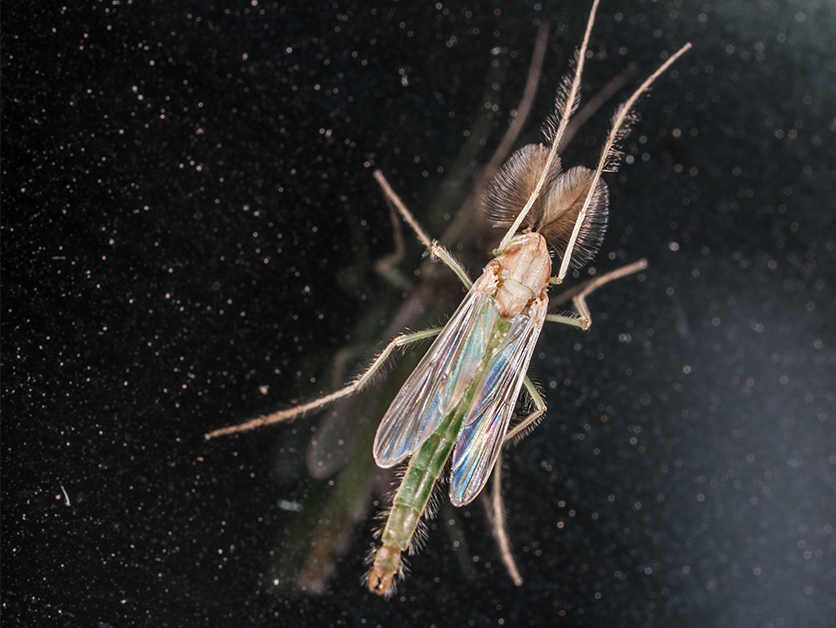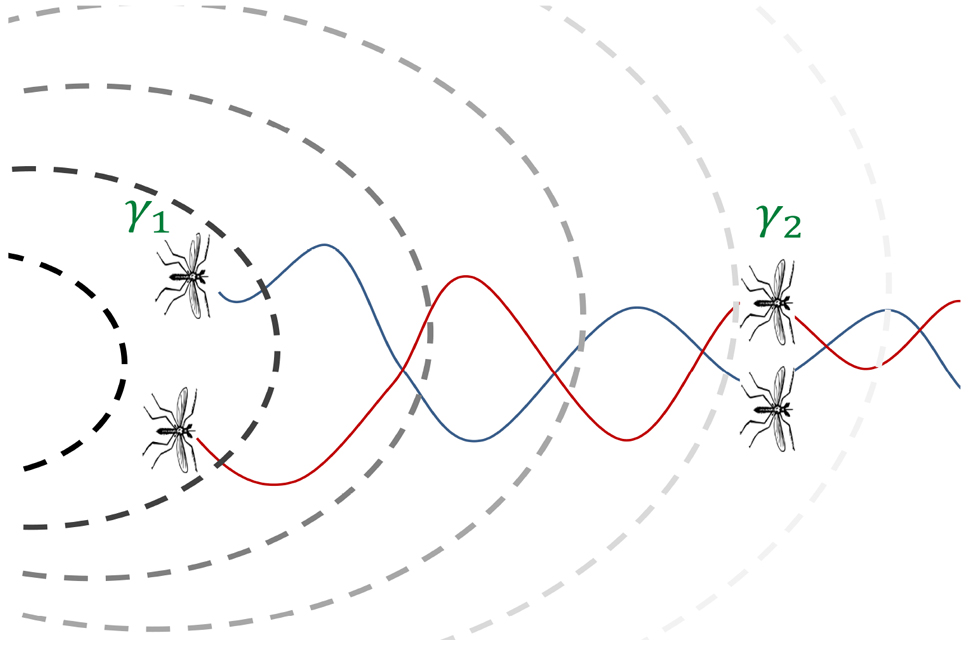Are you a journalist? Please sign up here for our press releases
Subscribe to our monthly newsletter:
In a swarm of midges that seems to hover in midair, pairs of insects will become inseparable for a while. The two fly across the swarm together, as if connected by an invisible bond, and they oscillate around one another like a couple of dancers. Scientists have pondered this peculiar pairing: Are these midges perhaps two rivals checking each other out? Or, conversely, two allies joining forces? Or is it a male getting closer to another midge to see if, by any chance, it’s a female who had mistakenly joined the all-male swarm? Researchers at the Weizmann Institute of Science, in collaboration with scientists in the United States, have now shown that the pairing probably has nothing to do with the midges’ social preferences.

That insect pairs should form within the swarm is surprising, considering how chaotic a swarm is and how fast midges fly: about 10 centimeters per second. Yet scientists at Stanford University – who had observed the pairing in the experimental swarm of non-biting midges, Chironomus riparius, in their lab – saw that some pairs crossed the entire swarm from side to side up to eight times.
In earlier work, Prof. Nir Gov and postdoctoral fellow Dr. Dan Gorbonos of the Weizmann Institute’s Chemical and Biological Physics Department had developed a physical model to explain how an insect swarm forms. They proposed that insects are attracted to one another by the buzzing they all make as they fly, and that they tend to accelerate toward one another in proportion to the intensity of the buzz. The researchers also assumed that, as is common in sensory biological systems, the insects continuously adapt their noise sensitivity: They become desensitized to the noisy background buzz in the center of the “party,” while their sensitivity rises at the edges of the swarm, where the buzz is weaker. Because their model involves these two factors – adaptation and a sort of gravity-like attraction that can work over relatively long distances – the scientists refer to it as a sort of “adaptive gravity.”
They can stay so close to each other that the mutual buzzing will continue to feel stronger than the general noise
In the new study, Gov and Gorbonos applied their model to see if it could explain the phenomenon of pairing. After analyzing the midge trajectories recorded by the cameras at Stanford, they reached the conclusion that the pairing can be explained by an interplay between the two “buzz” factors – attraction and adaptation. When the midges hover close to the center of the swarm, the noise around them is so great and their sensitivity, consequently, so low, that they are not sufficiently attentive to the buzzing of individuals in their surroundings. But if two midges happen to fly next to one another away from the center of the swarm, their sensitivity increases gradually, so at some point, the buzzing they pick up from each other becomes stronger than the background noise of the swarm, and it attracts them to one another, prompting them to form a tight pair. Once this attraction forms, they can stay so close to each other that the mutual buzzing will continue to feel stronger than the general noise, and they remain paired until this delicate balance is disrupted. Relying on these principles, the scientists correctly predicted the trajectories of the midge pairs by physical modeling alone, without the need to invoke any potential biological motivation for the insects’ behavior.

In addition to explaining an intriguing phenomenon observed in insects, these findings may be applicable to collective behavior in other biological systems – for example, flocks of birds, or groups of bacteria or cells. The findings may also prove useful in nonbiological settings, for instance, in predicting potential interactions within groups of robots or drones.

Study authors included Dr. Kasper van der Vaart, Dr. Michael Sinhuber and Prof. Nicholas T. Ouellette of Stanford University, and Prof. James G. Puckett of Gettysburg College.